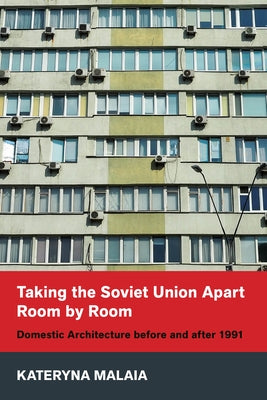Before you leave...
Take 20% off your first order
20% off
Enter the code below at checkout to get 20% off your first order
Discover summer reading lists for all ages & interests!
Find Your Next Read

Taking the Soviet Union Apart Room by Room investigates what happens to domestic spaces, architecture, and the lives of urbanites during a socioeconomic upheaval. Kateryna Malaia analyzes how Soviet and post-Soviet city dwellers, navigating a crisis of inadequate housing and extreme social disruption between the late 1980s and 2000s, transformed their dwellings as their countries transformed around them. Soviet infrastructure remained but, in their domestic spaces, urbanites transitioned to post-Soviet citizens.
The two decades after the collapse of the USSR witnessed a major urban apartment remodeling boom. Malaia shows how, in the context of limited residential mobility, those remodeling and modifying their homes formed new lifestyles defined by increased spatial privacy. Remodeled interiors served as a material expression of a social identity above the poverty line, in place of the outdated Soviet signifiers of well-being. Connecting home improvement, self-reinvention, the end of state socialism, and the lived experience of change, Malaia puts together a comprehensive portrait of the era.
Malaia shows both the stubborn continuities and the dramatic changes that accompanied the collapse of the USSR. Making the case for similarities throughout the former Soviet empire, this study is based on interviews and fieldwork done primarily in Kyiv and Lviv, Ukraine. Many of the buildings described are similar to those damaged or destroyed by Russian bombings or artillery fire following the invasion of Ukraine on February 24, 2022. A book about major historic events written through the lens of everyday life, Taking the Soviet Union Apart Room by Room is also about the meaning of home in a dramatically changing world.
Kateryna Malaia is Assistant Professor at the School of Architecture, University of Utah. She studies the evolution of architecture in times of sociopolitical change through the lenses of cultural practices and material culture, particularly in relation to the collapse of the USSR and rising housing insecurity in the United States.
Thanks for subscribing!
This email has been registered!
Take 20% off your first order
Enter the code below at checkout to get 20% off your first order